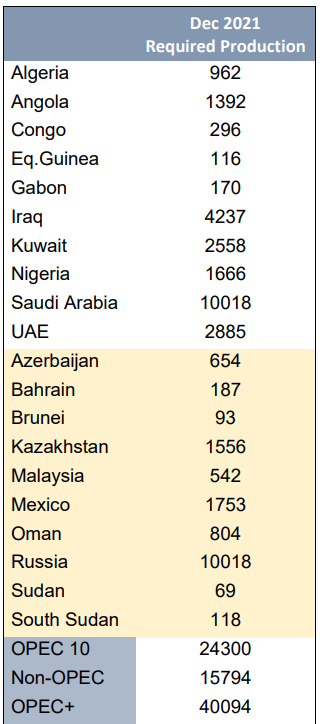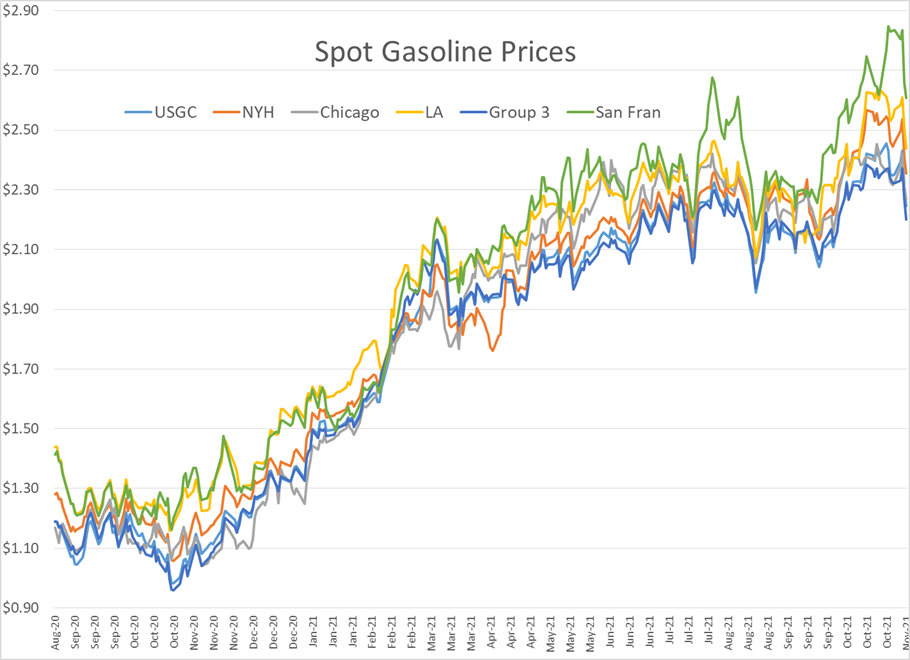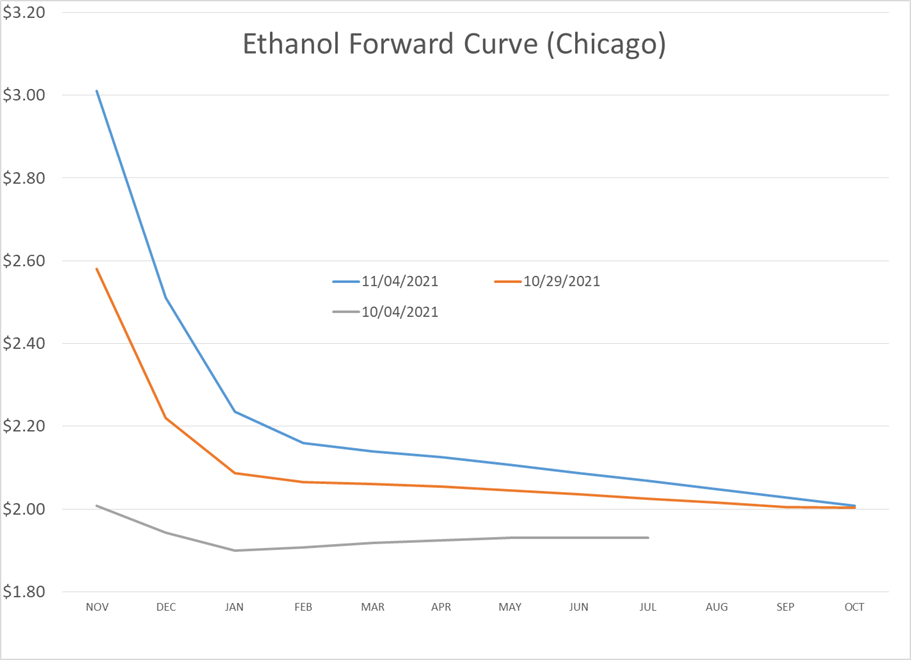The Fall Rally In Energy Prices Officially Ended Thursday After Huge Reversal In Morning Trade

The fall rally in energy prices officially ended Thursday after a huge reversal in morning trade wiped out 7 cent gains for refined products, leading to more heavy selling the afternoon. The complex is attempting to find a bottom this morning with modest gains, but the trend lines were broken this week, and the charts continue to favor lower prices in the weeks ahead.
In addition to the bearish technical outlook, the big physical players seem to be figuratively buying this selloff and literally not buying it as basis values in most US cash markets dropped for a 2nd straight day, adding to the severe losses in futures.
If you buy gasoline in the North East, you’re probably wondering why your prices went up yesterday even when RBOB dropped a nickel. Ethanol is the culprit as the price spike went completely off the rails yesterday, with values in the NYH area surging more than 50 cents on the day, after already jumping more than 40 cents this week. That jump in prices was enough to override the drop in gasoline, despite the 90/10 ratio between the two components. The forward curve chart below shows how incredibly steep the backwardation has become thanks to increased production, and a profound inability to transport that product, with $1/gallon separating prices in Chicago over just a few months, and New York values are nearly $1 more expensive than that today.
OPEC & Friends made no changes to their current output agreement Thursday, and will meet again in the month. This lack of change was credited with both yesterday’s price pullback, and the rally overnight, which tells you how much those headlines are worth. While the White House wasted no time in expressing their discontent with the cartel’s decision to only add 400,000 barrels/day of oil every month to global supplies, the Saudi Energy Minister clearly seemed to be growing weary of the criticism: “Oil is not the problem,” Saudi Energy Minister Prince Abdulaziz bin Salman told reporters. “The problem is the energy complex is going through havoc and hell.”
Another one bites the dust: Shell announced yet another refinery closure, with plans to shutter part of its German refining complex in the coming years, which would take roughly 150mb/day of capacity offline. P66 meanwhile announced it would begin repairs to its Belle Chasse facility that was swamped by Hurricane Ida, although it’s still not clear whether or not that plant will ever operate as a refinery again.
US payrolls increased by 531k in October, and the previous two months estimates were revised sharply higher in today’s jobs report, knocking both the official (U3) and real (U6) unemployment rates down a couple of tenths. Equity markets and the US Dollar jumped following the report which was stronger than most predicted, and energy futures seemed to not care much. This report could be another double edged sword however as the FED has made it clear this week that they’re looking for stronger employment as a signal before raising rates next year.
Click here to download a PDF of today's TACenergy Market Talk.
Latest Posts
Gasoline Futures Are Leading The Way Lower This Morning
The Sell-Off Continues In Energy Markets, RBOB Gasoline Futures Are Now Down Nearly 13 Cents In The Past Two Days
Week 15 - US DOE Inventory Recap
Prices To Lease Space On Colonial’s Main Gasoline Line Continue To Rally This Week
Social Media
News & Views
View All
Gasoline Futures Are Leading The Way Lower This Morning
It was a volatile night for markets around the world as Israel reportedly launched a direct strike against Iran. Many global markets, from equities to currencies to commodities saw big swings as traders initially braced for the worst, then reversed course rapidly once Iran indicated that it was not planning to retaliate. Refined products spiked following the initial reports, with ULSD futures up 11 cents and RBOB up 7 at their highest, only to reverse to losses this morning. Equities saw similar moves in reverse overnight as a flight to safety trade soon gave way to a sigh of relief recovery.
Gasoline futures are leading the way lower this morning, adding to the argument that we may have seen the spring peak in prices a week ago, unless some actual disruption pops up in the coming weeks. The longer term up-trend is still intact and sets a near-term target to the downside roughly 9 cents below current values. ULSD meanwhile is just a nickel away from setting new lows for the year, which would open up a technical trap door for prices to slide another 30 cents as we move towards summer.
A Reuters report this morning suggests that the EPA is ready to announce another temporary waiver of smog-prevention rules that will allow E15 sales this summer as political winds continue to prove stronger than any legitimate environmental agenda. RIN prices had stabilized around 45 cents/RIN for D4 and D6 credits this week and are already trading a penny lower following this report.
Delek’s Big Spring refinery reported maintenance on an FCC unit that would require 3 days of work. That facility, along with several others across TX, have had numerous issues ever since the deep freeze events in 2021 and 2024 did widespread damage. Meanwhile, overnight storms across the Midwest caused at least one terminal to be knocked offline in the St. Louis area, but so far no refinery upsets have been reported.
Meanwhile, in Russia: Refiners are apparently installing anti-drone nets to protect their facilities since apparently their sling shots stopped working.
Click here to download a PDF of today's TACenergy Market Talk.

The Sell-Off Continues In Energy Markets, RBOB Gasoline Futures Are Now Down Nearly 13 Cents In The Past Two Days
The sell-off continues in energy markets. RBOB gasoline futures are now down nearly 13 cents in the past two days, and have fallen 16 cents from a week ago, leading to questions about whether or not we’ve seen the seasonal peak in gasoline prices. ULSD futures are also coming under heavy selling pressure, dropping 15 cents so far this week and are trading at their lowest level since January 3rd.
The drop on the weekly chart certainly takes away the upside momentum for gasoline that still favored a run at the $3 mark just a few days ago, but the longer term up-trend that helped propel a 90-cent increase since mid-December is still intact as long as prices stay above the $2.60 mark for the next week. If diesel prices break below $2.50 there’s a strong possibility that we see another 30 cent price drop in the next couple of weeks.
An unwind of long positions after Iran’s attack on Israel was swatted out of the sky without further escalation (so far anyway) and reports that Russia is resuming refinery runs, both seeming to be contributing factors to the sharp pullback in prices.
Along with the uncertainty about where the next attacks may or may not occur, and if they will have any meaningful impact on supply, come no shortage of rumors about potential SPR releases or how OPEC might respond to the crisis. The only thing that’s certain at this point, is that there’s much more spare capacity for both oil production and refining now than there was 2 years ago, which seems to be helping keep a lid on prices despite so much tension.
In addition, for those that remember the chaos in oil markets 50 years ago sparked by similar events in and around Israel, read this note from the NY Times on why things are different this time around.
The DOE’s weekly status report was largely ignored in the midst of the big sell-off Wednesday, with few noteworthy items in the report.
Diesel demand did see a strong recovery from last week’s throwaway figure that proves the vulnerability of the weekly estimates, particularly the week after a holiday, but that did nothing to slow the sell-off in ULSD futures.
Perhaps the biggest next of the week was that the agency made its seasonal changes to nameplate refining capacity as facilities emerged from their spring maintenance.
PADD 2 saw an increase of 36mb/day, and PADD 3 increased by 72mb/day, both of which set new records for regional capacity. PADD 5 meanwhile continued its slow-motion decline, losing another 30mb/day of capacity as California’s war of attrition against the industry continues. It’s worth noting that given the glacial pace of EIA reporting on the topic, we’re unlikely to see the impact of Rodeo’s conversion in the official numbers until next year.
Speaking of which, if you believe the PADD 5 diesel chart below that suggests the region is running out of the fuel, when in fact there’s an excess in most local markets, you haven’t been paying attention. Gasoline inventories on the West Coast however do appear consistent with reality as less refining output and a lack of resupply options both continue to create headaches for suppliers.







